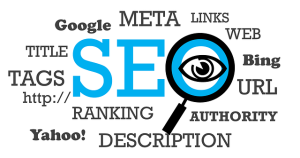Comprehensive SEO audits are vital for improving a website's online visibility and performance, encompassing on-page content optimization, technical aspects, keyword strategy, backlink profiles, and user experience. These in-depth analyses provide a structured roadmap for professionals to navigate the complex search engine optimization landscape. By identifying weaknesses and opportunities, businesses can address technical issues, optimize content, improve site speed, enhance mobile usability, and stay ahead of algorithm updates, ultimately driving higher search rankings, organic traffic, and conversions. Comprehensive SEO audits are essential for achieving long-term success in the dynamic digital realm.
In today’s competitive digital landscape, a thorough Comprehensive SEO Audit is an indispensable tool for any business aiming to thrive online. This in-depth analysis goes beyond surface-level optimization, delving into every facet of a website’s performance. From on-page content and technical structure to off-page backlinks and user experience, understanding these components is key to unlocking your site’s full potential. By uncovering hidden strengths and weaknesses, you can harness actionable insights for informed decisions and drive organic growth.
Understanding Comprehensive SEO Audits: Unveiling the Basics

Comprehensive SEO audits are a critical process for any website aiming to boost its online visibility and performance. These in-depth analyses go beyond surface-level checks, delving into every facet of a site’s digital presence. By examining various elements like on-page content optimization, technical aspects, keyword strategy, backlink profiles, and user experience, SEO audits provide a holistic view of a website’s health. They are akin to unearthing the hidden layers of a complex machine, identifying both its strengths and weaknesses.
Such audits are essential tools for professionals and businesses alike, offering a structured approach to navigate the intricate landscape of search engine optimization. Through this process, potential roadblocks that hinder search rankings are revealed, enabling informed strategies to enhance organic reach. By uncovering opportunities for improvement, comprehensive SEO audits serve as a roadmap, guiding websites towards achieving their online goals and staying ahead in the dynamic digital realm.
The Purpose and Benefits of In-Depth SEO Analysis

In-depth SEO analysis, often facilitated through comprehensive SEO audits, serves as a powerful tool for brands and marketers to gain profound insights into their online visibility and performance. It involves a meticulous examination of various aspects of a website, from technical functionalities to content quality, keyword optimization, and user experience. This strategic process is pivotal in understanding the current standing of a site on search engines and identifying areas for enhancement.
By conducting such analyses, businesses can unearth hidden opportunities to boost their search rankings, attract more organic traffic, and ultimately drive conversions. It enables them to address technical issues hindering indexing, optimize content for relevant keywords, improve site speed, and enhance mobile usability. Furthermore, it provides a competitive edge by identifying industry trends, analyzing competitor strategies, and staying ahead of algorithm updates, ensuring long-term sustainability in the digital landscape.
Key Components of a Successful SEO Audit

A comprehensive SEO audit is an essential step in understanding and improving a website’s online visibility. It involves a meticulous analysis of various factors that contribute to a site’s search engine rankings. The key components include technical SEO, keyword research, on-page optimization, link profile, and user experience.
Technical SEO focuses on the back-end aspects, ensuring the website is accessible and crawlable for search engines. Keyword research involves identifying relevant terms and topics that target audiences are searching for, which helps in optimizing content. On-page optimization includes refining titles, meta descriptions, headings, and content to align with keywords. The link profile analysis evaluates backlinks, assessing their quality and relevance. Lastly, user experience considers website loading speed, mobile responsiveness, and overall navigation ease, as these factors significantly impact search rankings and visitor retention.
Tools and Techniques for Efficient SEO Evaluation

Conducting a Comprehensive SEO Audit is an essential first step for any website looking to boost its online visibility. This process involves leveraging a suite of tools and techniques to meticulously analyze every facet of a site’s digital presence. Keyword research tools, such as Google Ads Keyword Planner or Ahrefs, help identify high-value keywords that drive organic traffic. Website analytics platforms like Google Analytics provide insights into user behavior, helping SEO strategists understand how visitors engage with the content.
Technical SEO audits are equally crucial, utilizing tools like Screaming Frog or SEMrush to scrutinize site architecture, metadata, and on-page elements for any issues hindering search engine crawlers. These audits ensure that a website is technically sound, allowing for better indexing and improved performance in search results. By combining these tools and techniques, SEO professionals can gain actionable insights to enhance content strategy, optimize site structure, and ultimately drive higher rankings.
On-Page Optimization: A Crucial Aspect of SEO Audits

Comprehensive SEO audits aren’t just about analyzing website structure and content; they also delve deeply into on-page optimization. This critical aspect ensures that each page on a website is optimized for search engines, enhancing its visibility and relevance. On-page optimization includes optimizing titles, headings, meta descriptions, and URL structures to align with relevant keywords and user intent. Well-crafted content that engages users while incorporating strategic keyword usage is essential.
Effective on-page optimization also involves image optimization, ensuring alt tags are descriptive and relevant keywords are included. Additionally, it checks for mobile-friendliness, fast page load times, and schema markup implementation. These factors significantly impact a website’s ranking potential, making on-page optimization a foundational step in any successful Comprehensive SEO Audits.
Off-Page Strategies: Enhancing Your Online Visibility

Off-page strategies are a crucial component of any comprehensive SEO audit, as they focus on actions taken outside your website to improve online visibility. This involves building high-quality backlinks from reputable sources, which signal to search engines that your content is valuable and trustworthy. Engaging in social media marketing and brand mentions also falls under this category, helping to increase your website’s authority and reach a wider audience.
By implementing these off-page tactics effectively, you can significantly boost your search engine rankings. This includes optimizing your profile on business directories, ensuring consistent branding across all platforms, and leveraging guest blogging opportunities to gain exposure to new audiences. These strategies work in harmony with on-page optimizations to create a robust SEO framework, driving organic traffic and enhancing your website’s overall performance.
Actionable Insights: Implementing Changes Post-Audit

After conducting a comprehensive SEO audit, it’s time to translate the findings into actionable insights. This involves identifying areas that require improvements and implementing targeted changes. Start by prioritizing issues based on their impact on search rankings and user experience. For instance, fixing technical SEO errors like broken links or slow page loading times can have an immediate effect.
Next, optimize content by incorporating relevant keywords strategically, enhancing meta titles and descriptions, and creating high-quality, engaging content that resonates with the target audience. Additionally, review and update your site’s structure, ensuring a logical navigation hierarchy. Regularly monitor search console and analytics tools post-changes to track progress and make data-driven adjustments for continuous SEO success.
